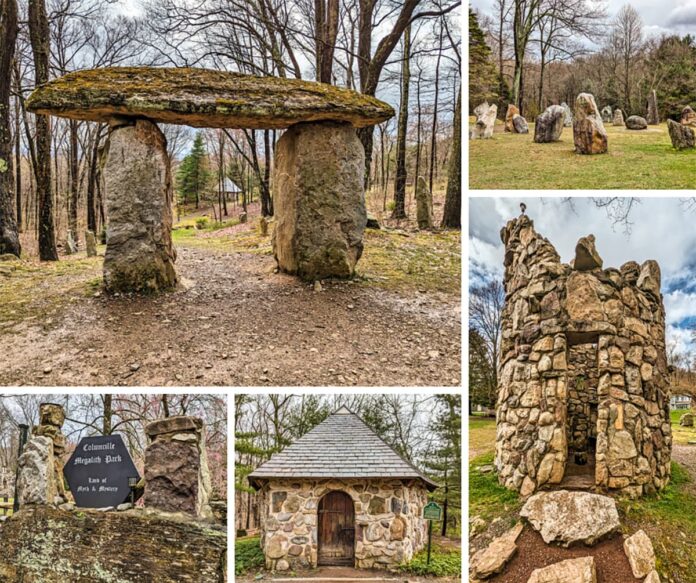
If you’re looking for information about visiting Columcille Megalith Park, AKA “Pennsylvania’s Stonehenge”, you’re in the right place!
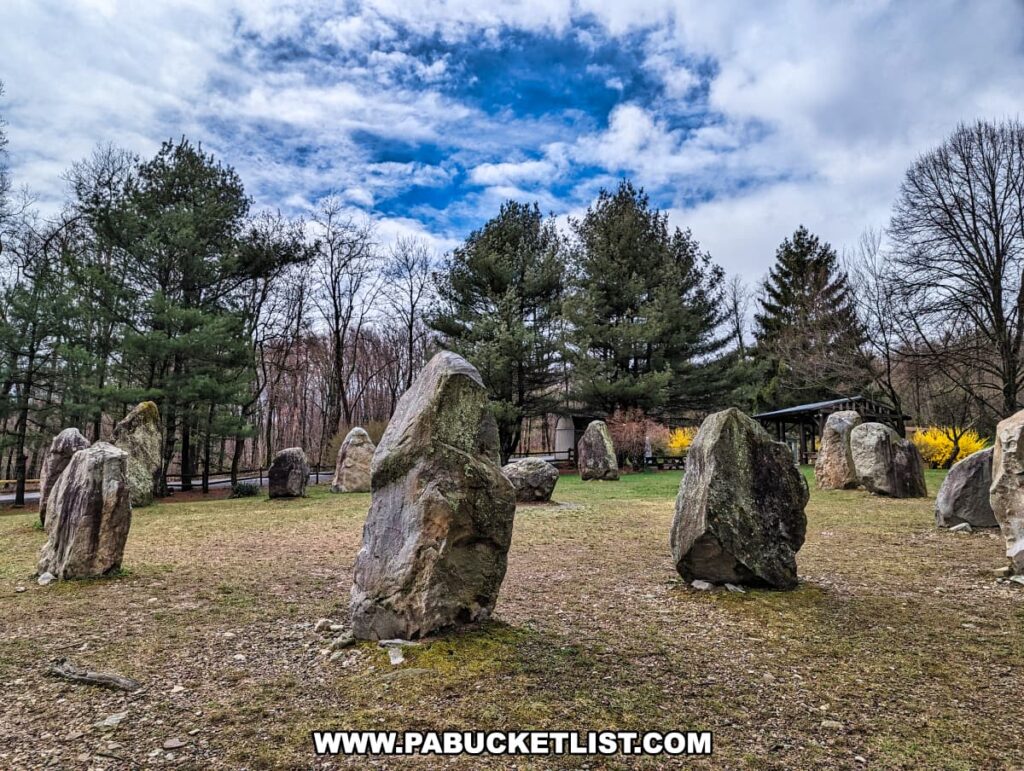
Columcille Megalith Park, spanning over 20 acres, features more than 90 strategically placed stone settings reminiscent of the megalithic structures found in ancient Celtic lands, with some formations paralleling the iconic Stonehenge (thus the nickname).
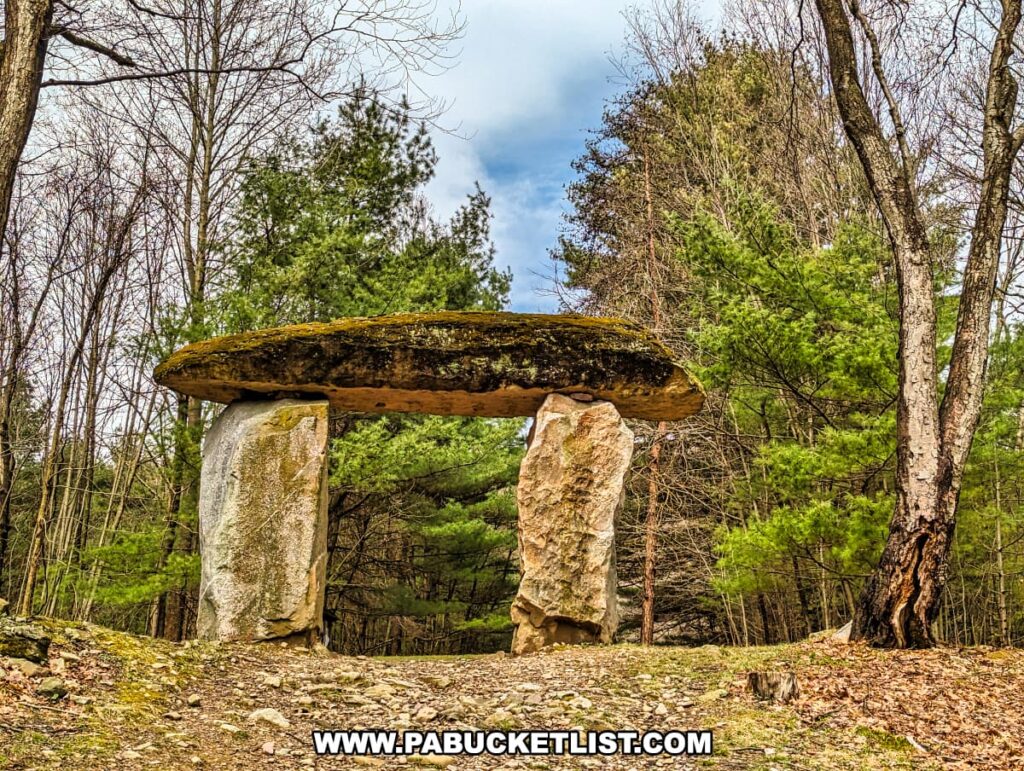
Nestled on the slope of Blue Mountain in northern Northampton County, Columcille Megalith Park offers a unique experience that echoes the mystical ambiance of ancient Celtic traditions.
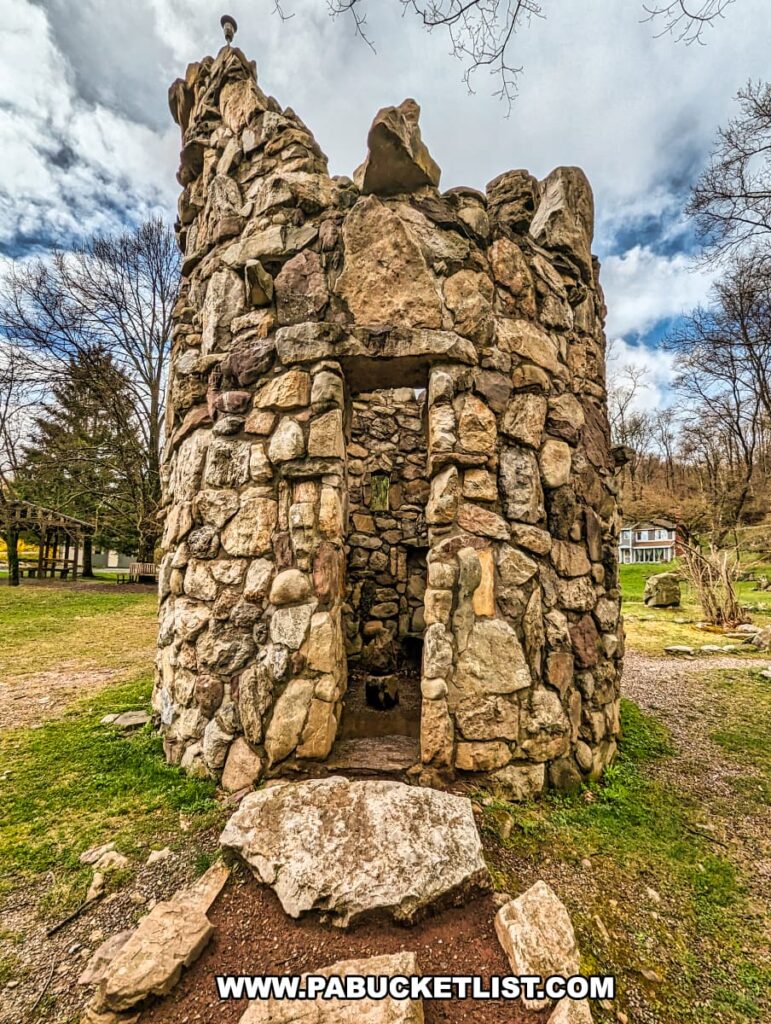
Creation of Columcille Megalith Park
Columcille Megalith Park was born from founder William H. Cohea, Jr.’s profound experience with ancient megaliths and Celtic Christianity on Scotland’s Isle of Iona in 1977, fueling his desire to recreate that spirit in America.
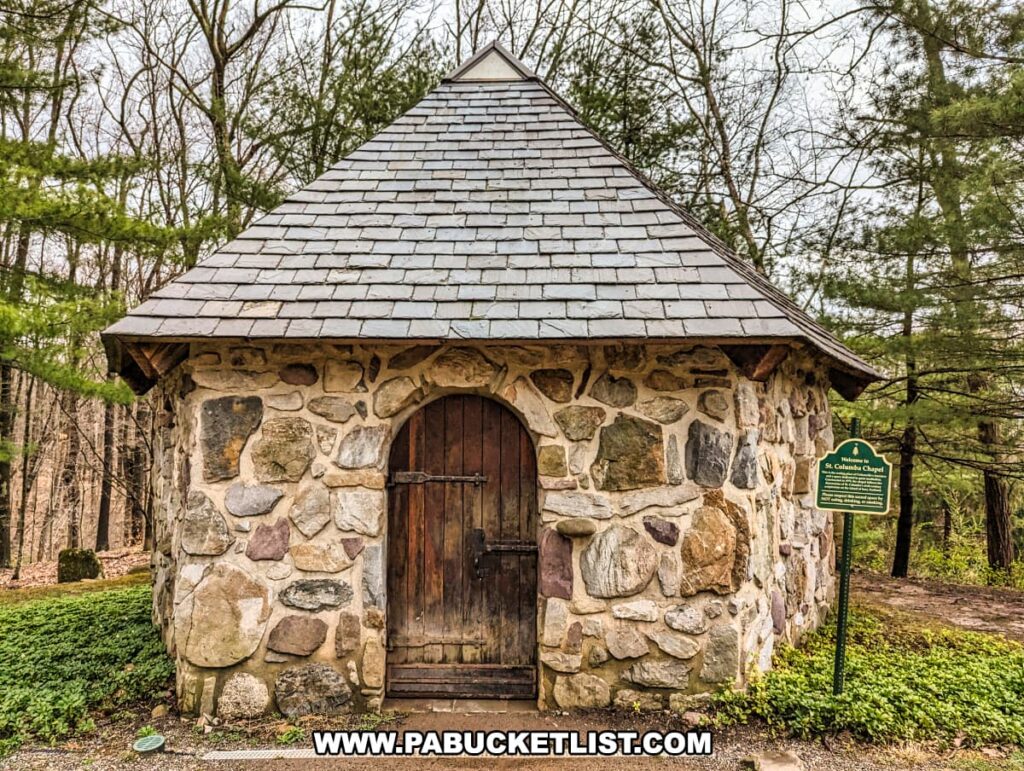
Cohea established the park in 1978 as a sanctuary for those seeking renewal and solace, through the power and presence of megalithic stones.
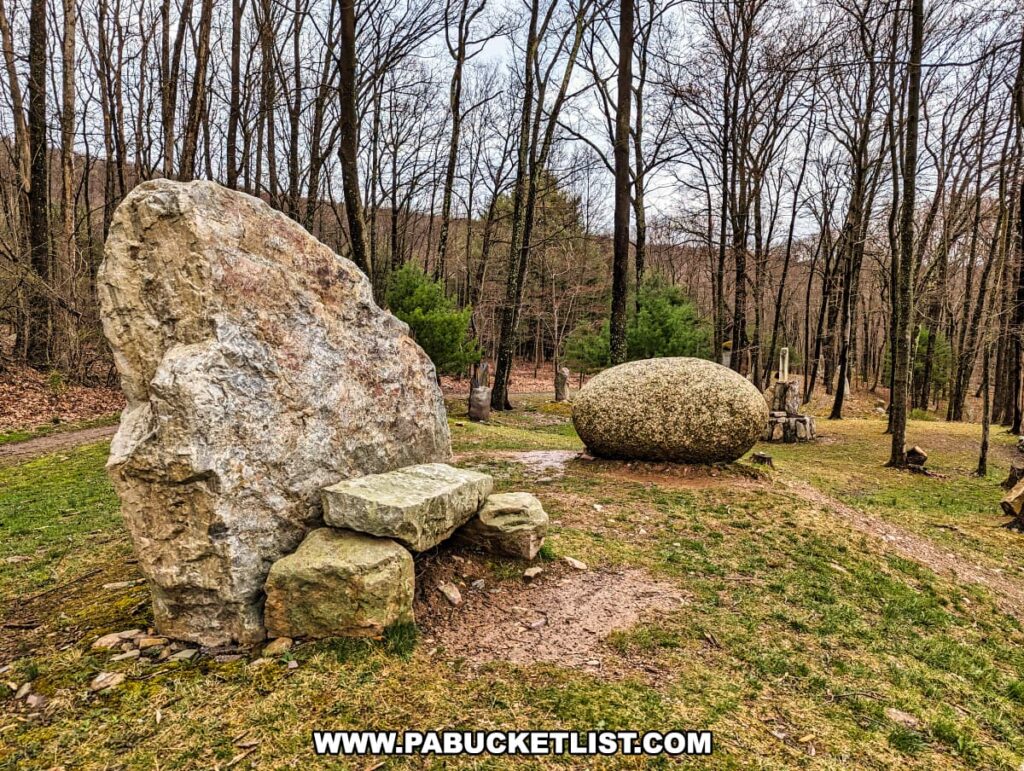
These stones, some dating back 3.6 billion years and weighing as much as 45 tons, are primarily sourced from local slate quarries or directly from the site.
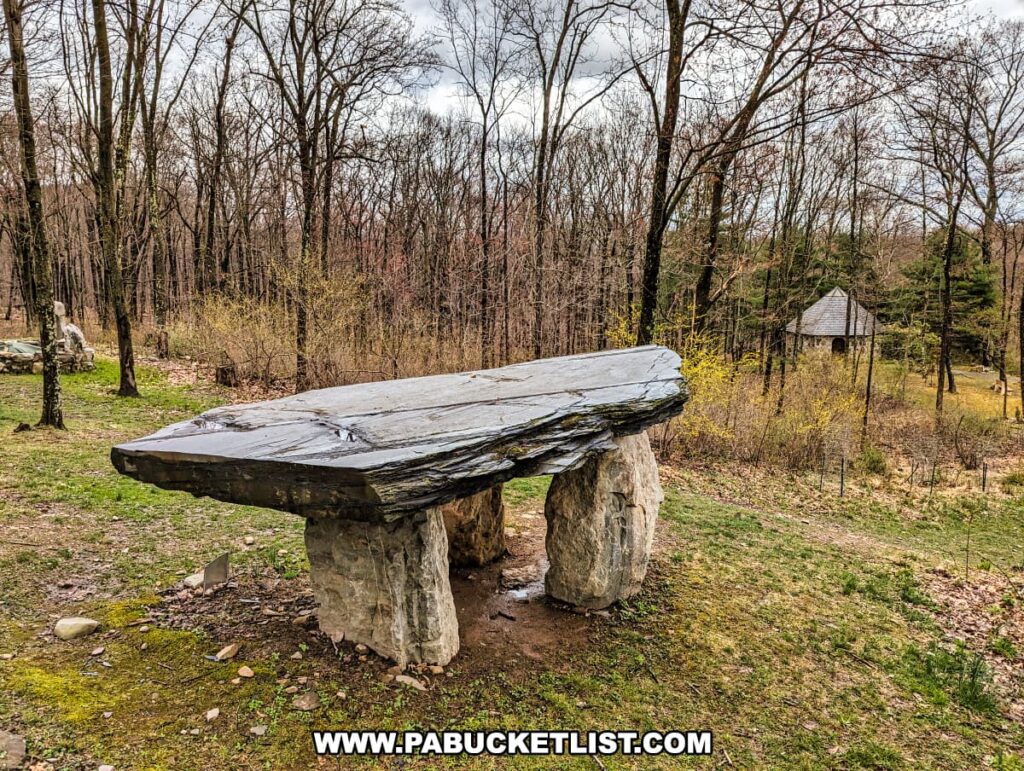
Direction | Hours | Admission Fees
Columcille Megalith Park is located at 2155 Fox Gap Road, Bangor, PA 18013.
The park is open from dawn until dusk year round.
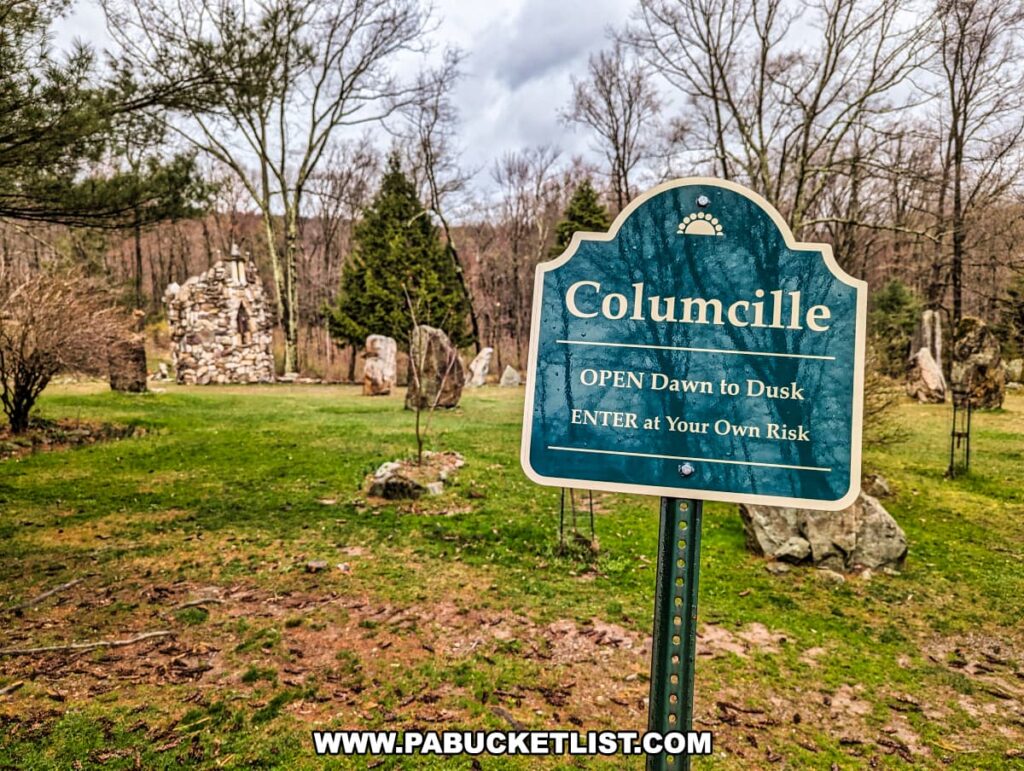
Admission fees are collected on the honor system; the suggested donation is Adults $10 and Children $5.
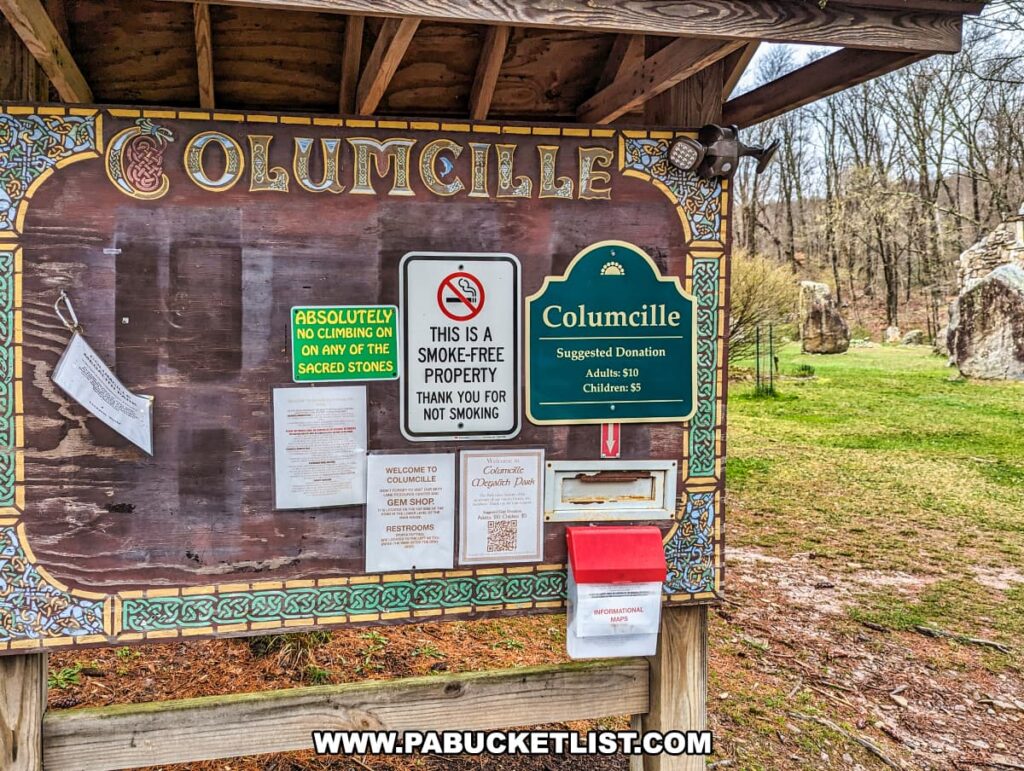
What You’ll See at Columcille Megalith Park
Visitors to the park can explore several miles of unpaved trails that meander through hardwood forests, across streams, and past ponds.
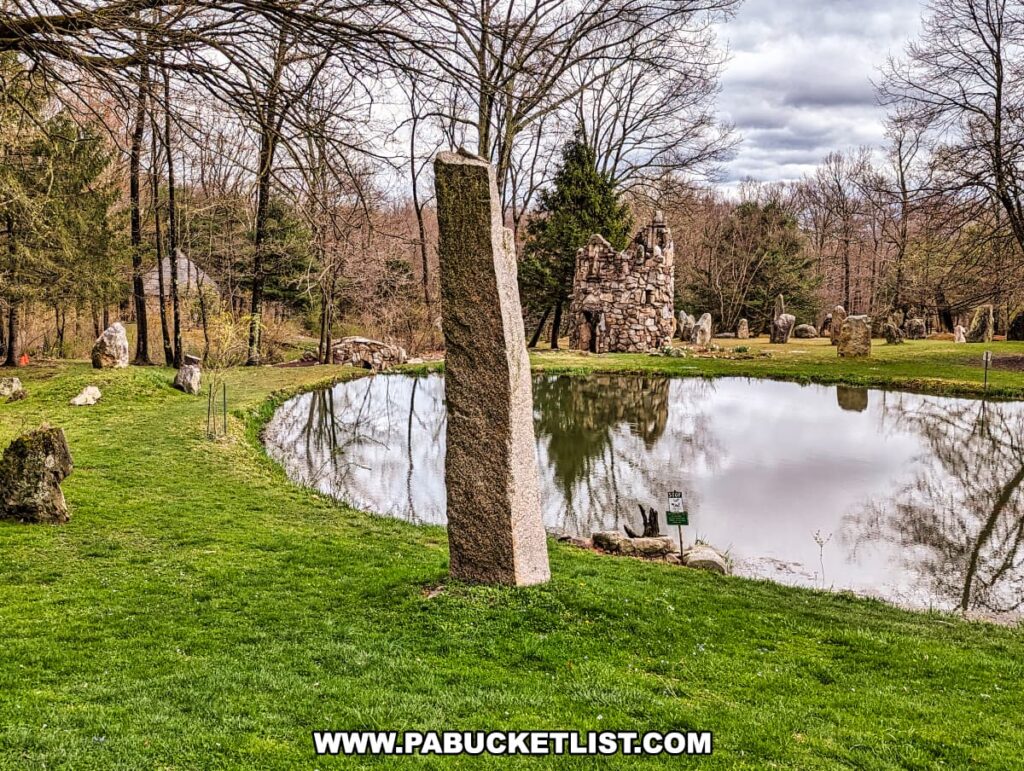
The trails, following the natural contours of the land, offer a physical and spiritual journey through a landscape designed for contemplation and communion with nature.
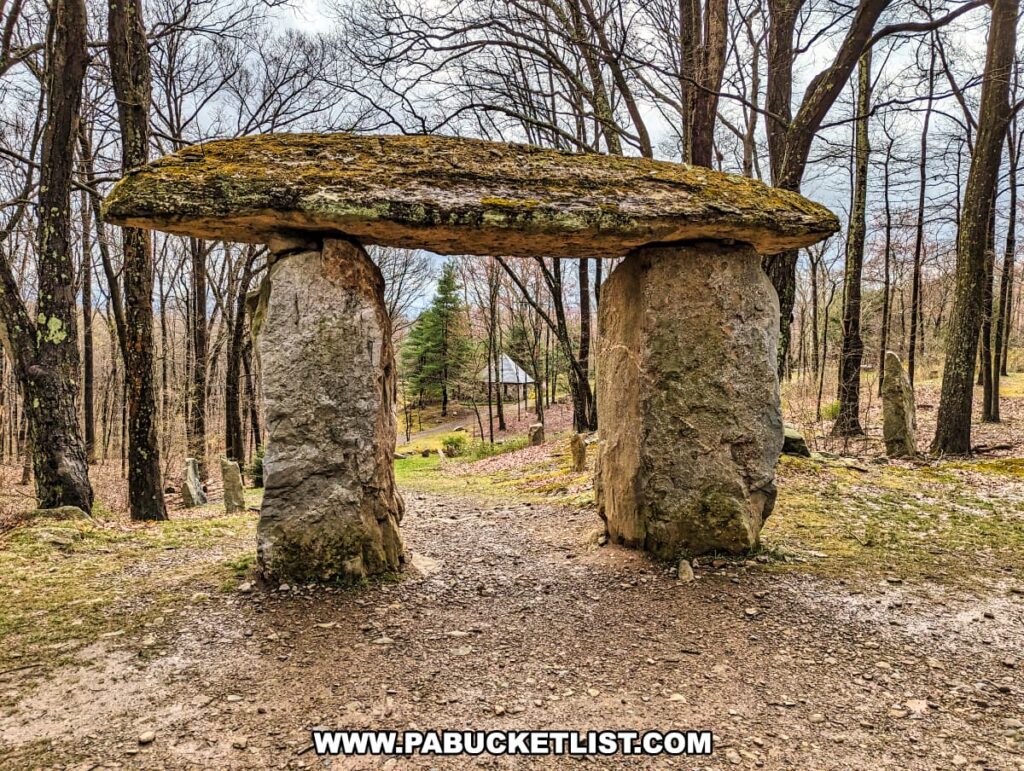
The park’s centerpiece, St. Columba Chapel, showcases exquisite craftsmanship.
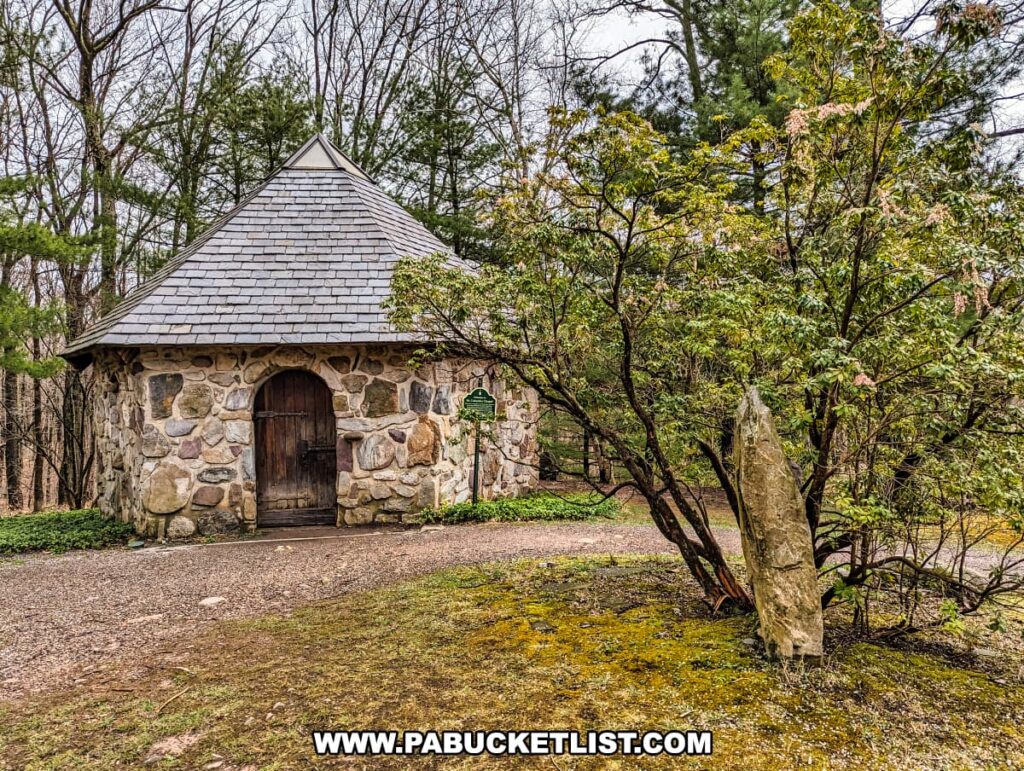
Visitors are encouraged to step inside and immerse themselves in the tranquility that pervades this sacred space.
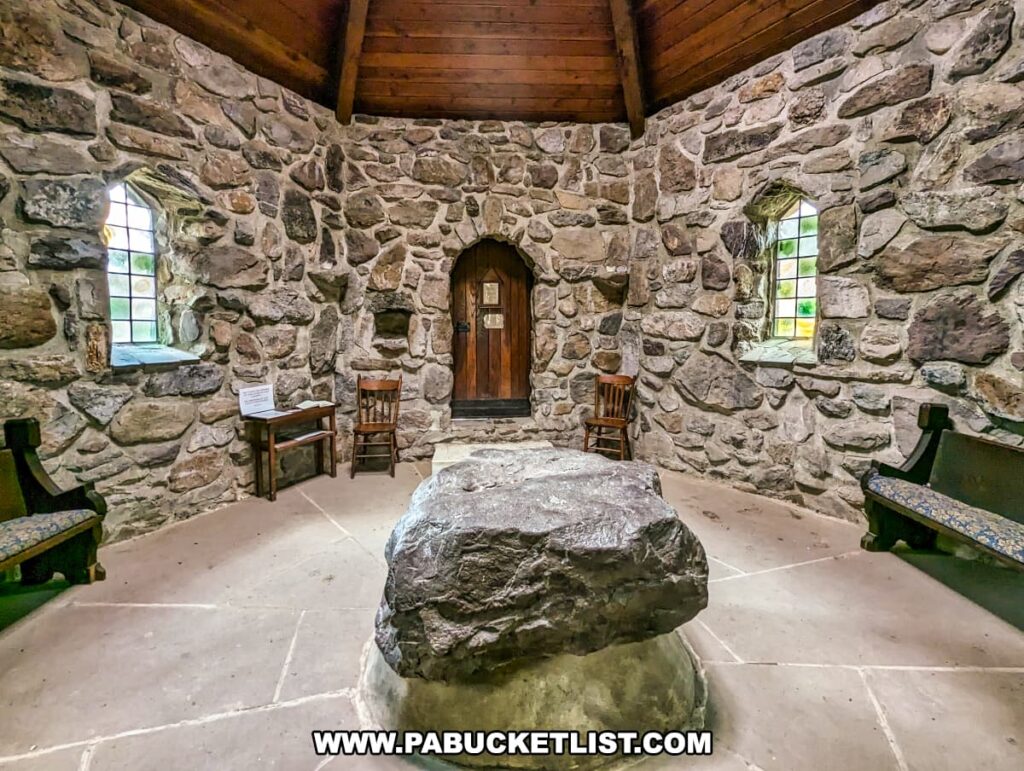
The Skyy Lane Resource Center provides additional insights into the park’s foundation and its dedication to preserving cultural and spiritual traditions.

Columcille Megalith Park is more than a mere collection of stones; it is a living testament to the blend of Celtic Christianity and ancient megalithic customs brought vividly to life in America.
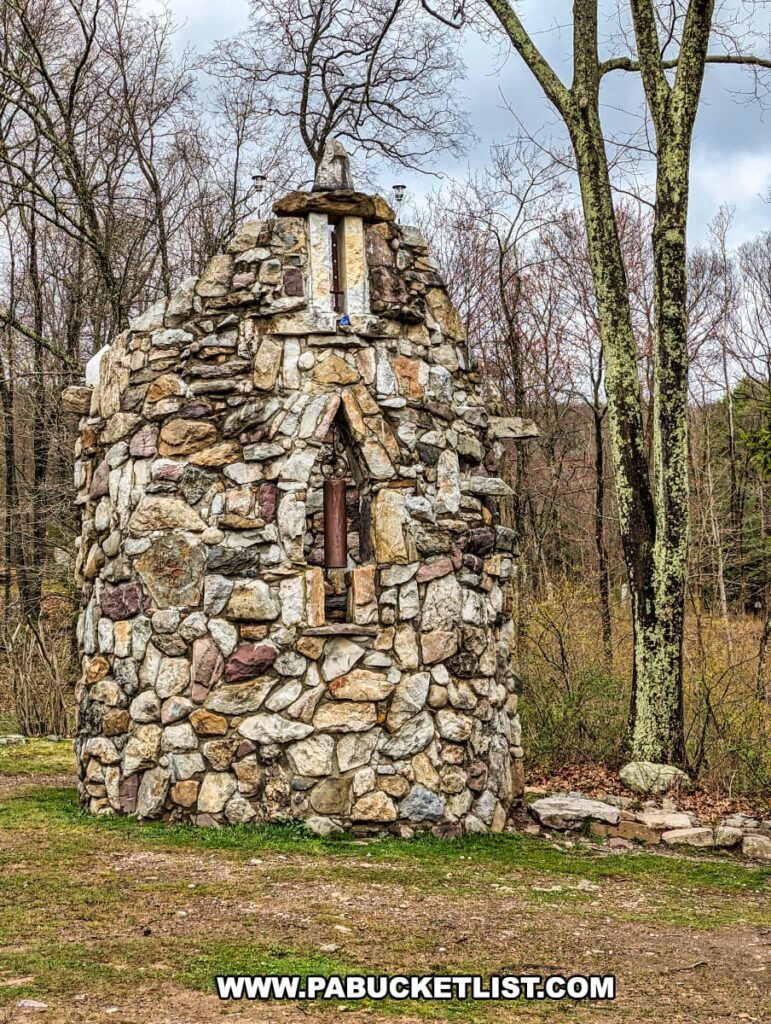
It serves as a sanctuary where individuals can engage in environmental communion, creative reflection, and meditative practices.
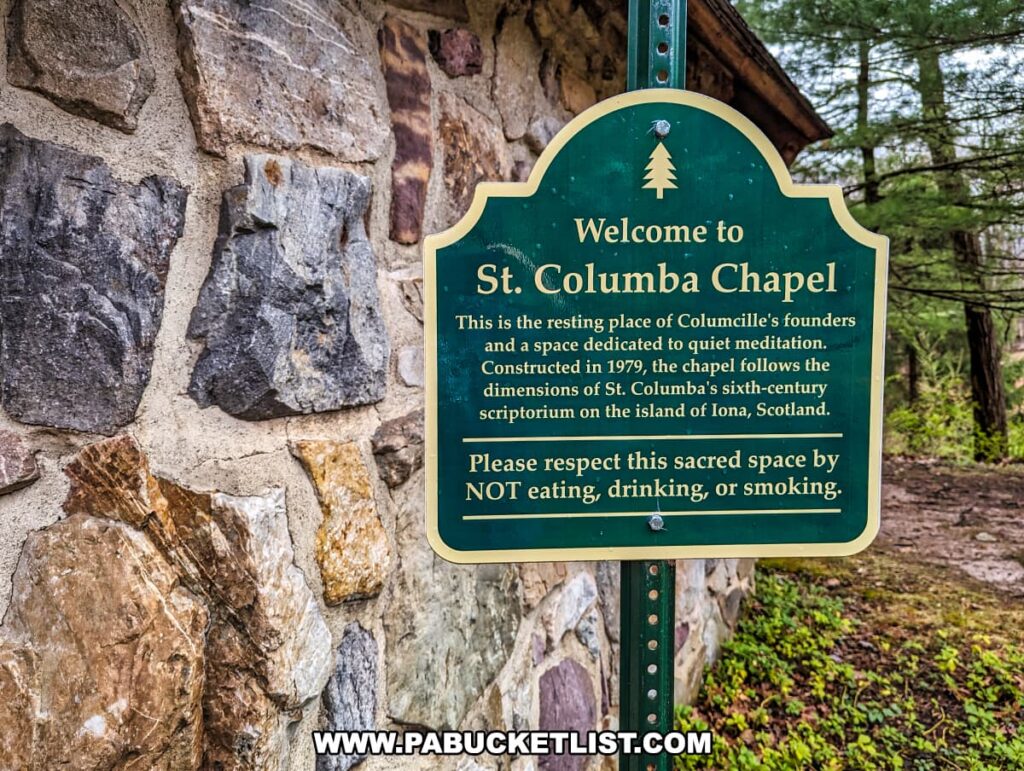
The park celebrates the seasonal observances of Celtic and other spiritual traditions, fostering a deep connection between visitors and the ancient energies of earth and sky.
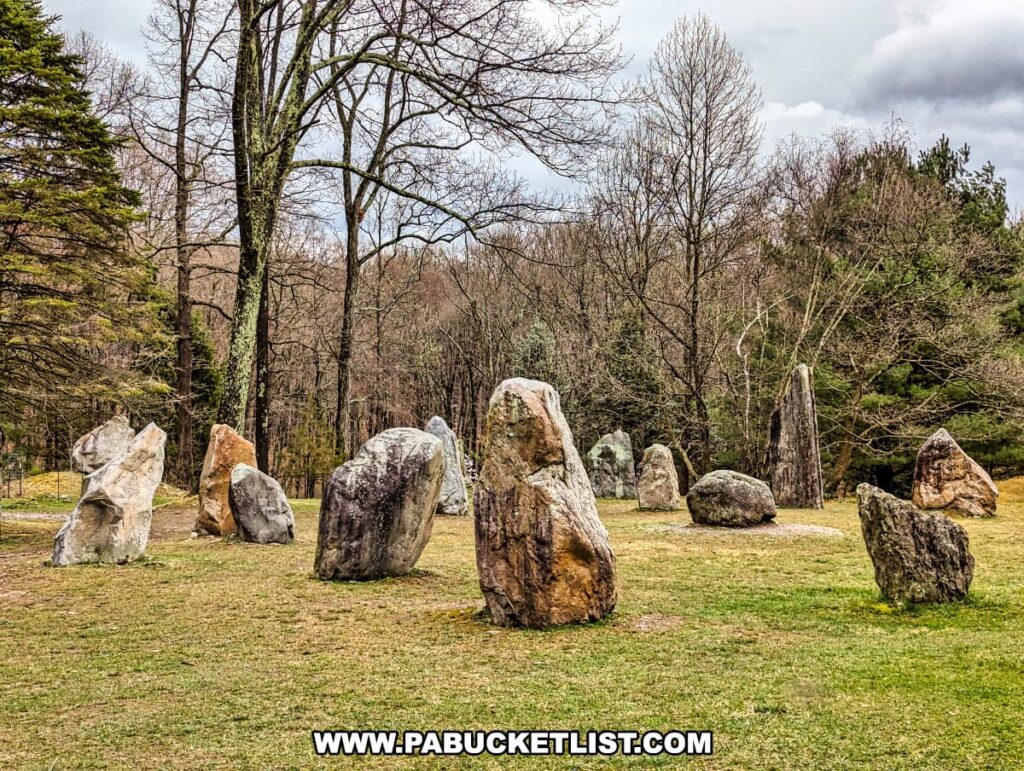
Final Thoughts
Columcille Megalith Park is a portal to the past, a place where myth and landscape converge to offer a profound experience.
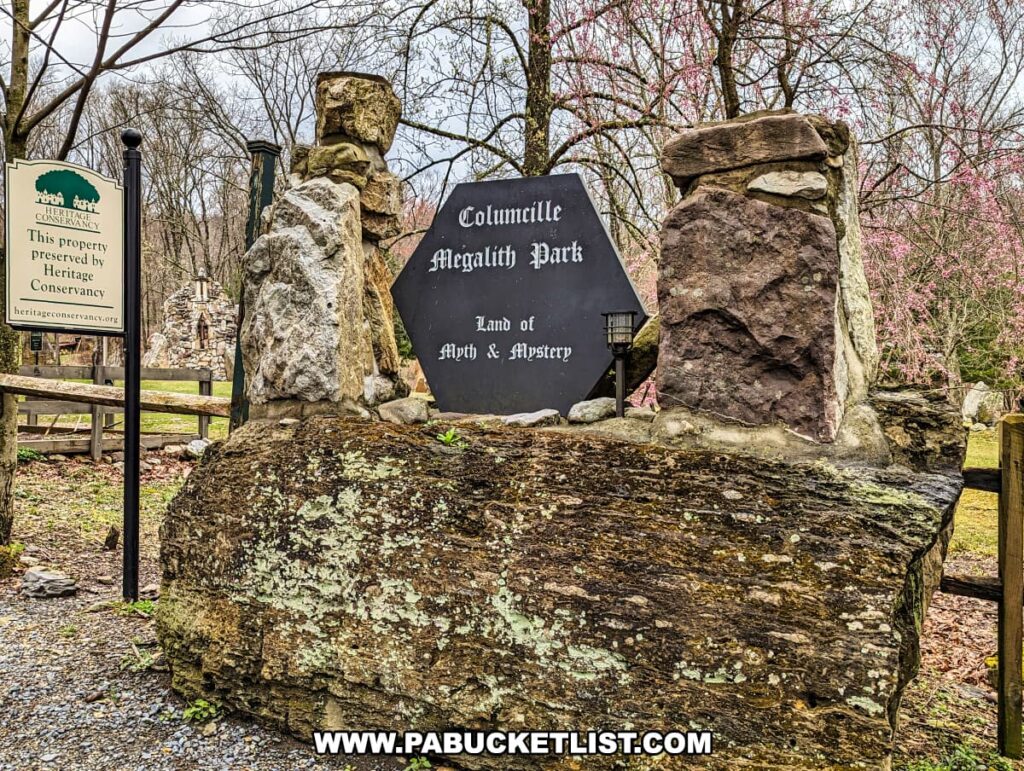
Whether you’re drawn by the allure of its megalithic structures, seeking a quiet corner for reflection, or interested in the rich spiritual heritage it embodies, Columcille provides a unique escape into the realms of nature and spirituality.
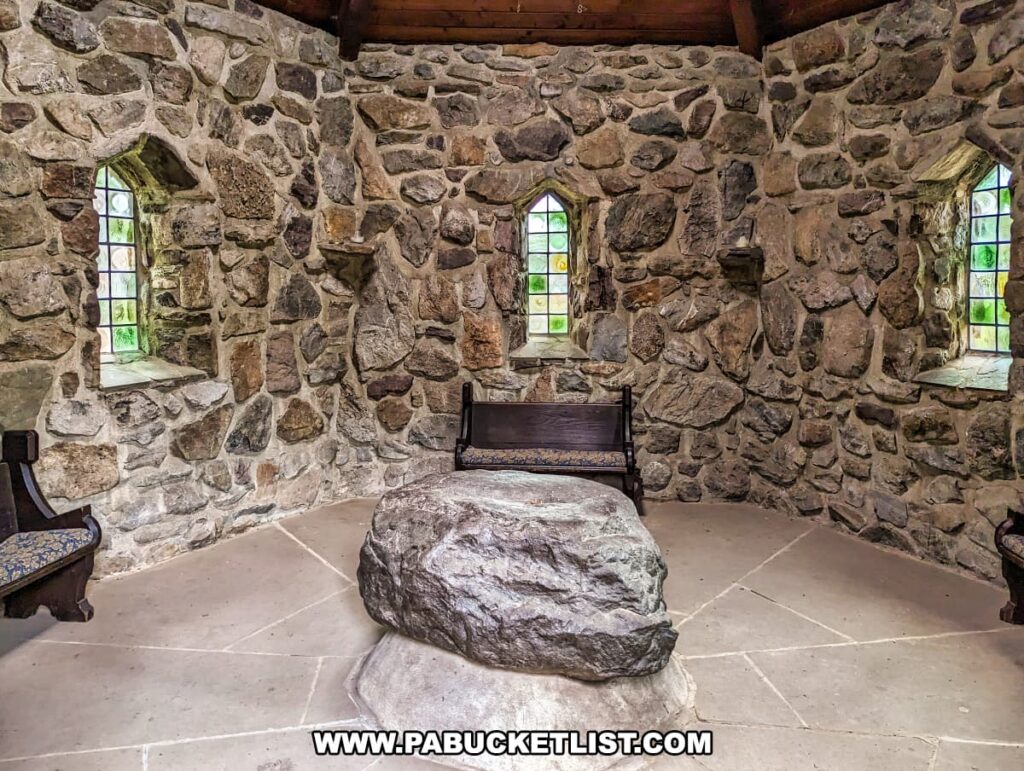
It stands as a monument to human creativity and the timeless quest for understanding our place within the natural world.
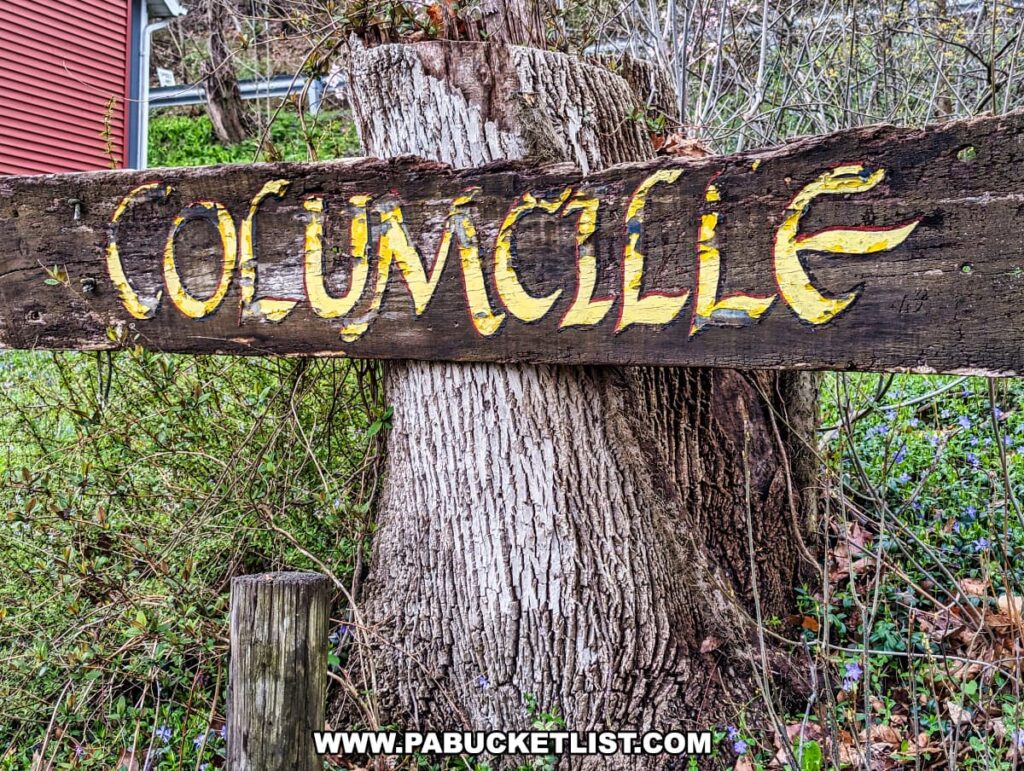
Nearby Attractions
Slateford Creek Falls is a series of three waterfalls along a half-mile stretch of Slateford Creek in Northampton County.
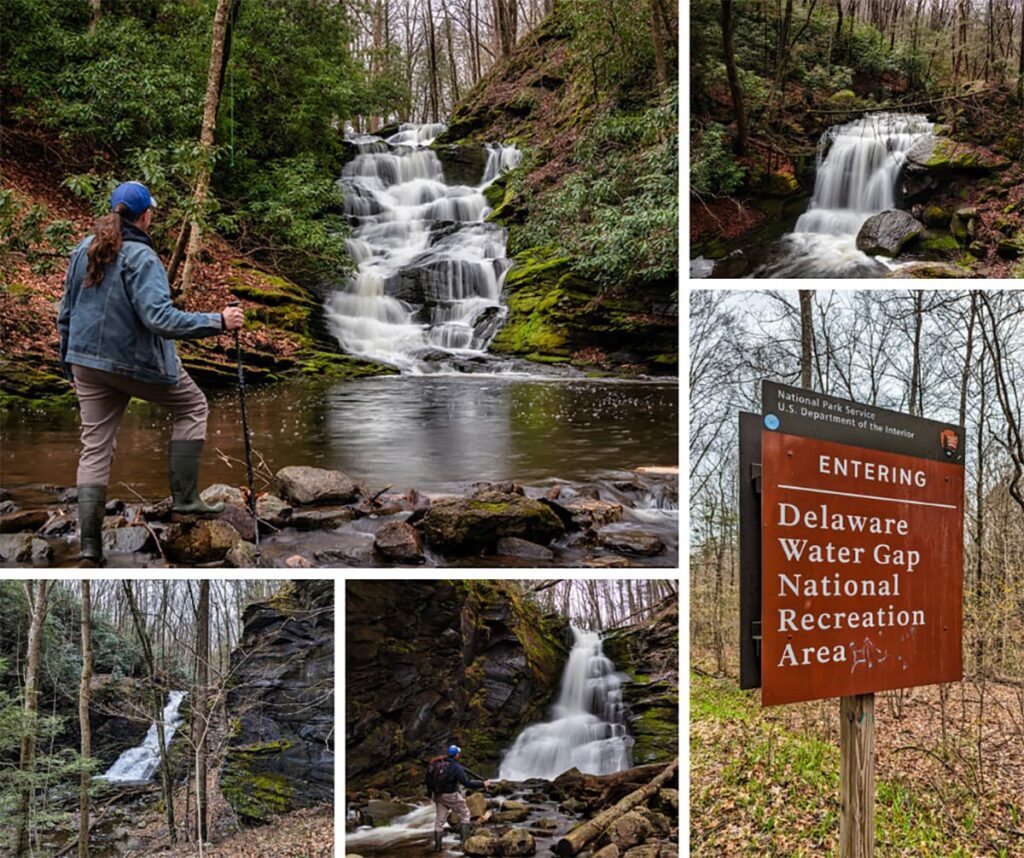
Bushkill Falls in Pike County, often dubbed the “Niagara of Pennsylvania,” is a privately-owned nature park that features eight stunning waterfalls, accessible through a network of scenic trails and beautiful boardwalks that cater to all levels of hikers.
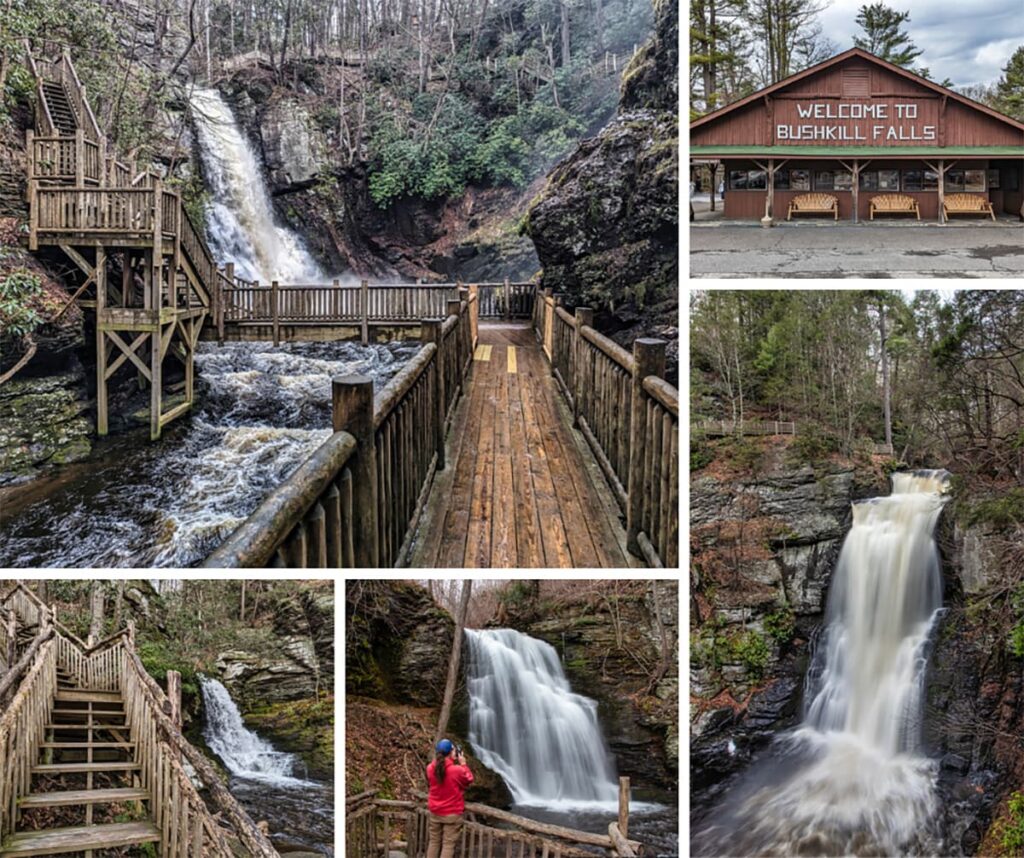
Find even more great spots to explore all across Pennsylvania with the interactive PA Bucket List Travel Map!
Did you enjoy this article?
If so, be sure to like and follow PA Bucket List on Facebook, Instagram, and/or Pinterest to learn more about the best things to see and do in Pennsylvania!
Click on any of the icons below to get connected to PA Bucket List on social media.


